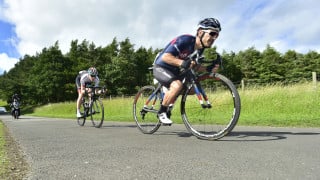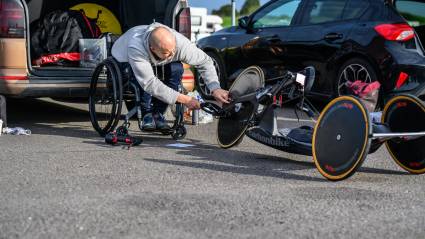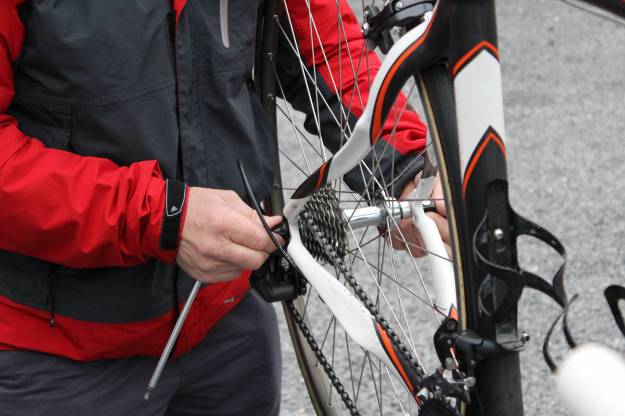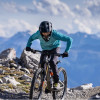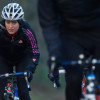Everyone would like to gain speed without having to spend money on the latest aero or lightweight kit. Here we offer some advice on some simple changes to help you go faster.
The philosophy of marginal gains has been at the heart of British Cycling’s success for a number of years and can equally be applied to your cycling and equipment to make the most of the time, fitness and kit you have. Each of the gains described may individually be small but add them all together and you can significantly improve your performance.
Train smart
Training can definitely make most of us faster but, to use a cliché, time is money and more time in the saddle certainly isn’t free. Even ruling out a pure financial cost, work and family commitments are a limiting factor on most peoples’ training. Therefore making the most of your precious time on the bike by training in a structured and smart manner is probably the most significant “free gain” you can make. There’s a British Cycling Training Plan to suit all abilities.
Sort your clothing out
You can have the most aerodynamic bike available but, if you are wearing a waterproof that is billowing in the wind, you will be losing all those seconds gained and more. Get into the habit of zipping up your jersey on downhills and flats if you have unzipped it for a climb. If you are required to wear a number, pin it on so that it doesn’t flap around and is out of the wind.
Skills
Often with road cycling, too much emphasis is placed on fitness rather than on learning and practicing bike handling skills. Cornering, descending and group riding skills are all opportunities to gain speed.
Hydrate
Water is practically free and, by not taking enough of it on board and optimising your hydration, you can severely compromise your performance. Even on cooler days it is vital to combat fluid losses through sweating, breathing and urination. It is best to drink one or two cups of fluid before exercise and then get into the habit of sipping continuously throughout.
Lose some weight
Before spending hundreds of pounds stripping grams off your bike, be honest whether you might be able to shed some weight yourself. Carrying excess weight is especially detrimental on climbs. On a 5km climb at eight percent, if a 75kg rider with a max sustainable power of 250 watts loses 2.5kg that would cut about 40 seconds off this rider's time.
It is not just on climbs though that carrying excess weight can cost you speed as, even on flats and descents, you will have to punch a bigger hole in the air.
Be compact on the bike and pedal efficiently. By keeping your upper body still and relaxed and working on an efficient pedal stroke, you will not only save energy, but also not create extra unnecessary drag. This particularly applies to time-trials, on long flat roads or into headwinds. Rocking, bobbing or swaying should be avoided at all costs. When you are riding, constantly scan your body and check that you are riding in a relaxed and efficient manner. Ensure your knees are driving up and towards the top-tube and that your body above waist height is still and tension free. With time and practice, the scanning and correction process will become almost automatic.
Keep your bike clean and well-maintained
Advanced aero profiling is not much good if your frame’s covered in grime. Muck also adds unnecessary weight and can easily negate the grams you shaved off with those titanium skewers. Pay particular attention to your drive chain as energy lost as sound or friction is energy that isn’t getting to your rear wheel.
Get low
If you want to push the pace on a long flat-road, are on the front of a group, on a long descent or riding into a headwind then get down on your drops or low on your hoods with your forearms horizontal. Wind tunnel testing has shown that a 70kg cyclist putting out 200 watts of power would be traveling at 32.4kph if riding upright on the brake hoods. However, if the same cyclist were to go down onto his drops his speed would increase to 34.4kph. Work on your mobility to improve your ability to sustain a low riding position.
Get your tyre pressure right
Don’t just inflate your tyres until they feel hard, use a track pump with a pressure gauge and put the right pressure in relative to your weight and the road conditions. An under inflated tyre will increase rolling resistance, be more prone to pinch flats, will handle badly and can even come off the rim. Conversely, an over-inflated tyre will give you a harsh ride, less traction and is more prone to damage from sharp rocks and similar road hazards. Experiment to find what tyre pressure suits you, the tyres you are running, your riding style and the conditions.

